Bulls have returned to the Bitcoin (BTC) market. Since March 10, the price of the largest cryptocurrency has risen by 35%. There are questions among investors and market players about the reasons for this sudden turnaround. In today’s analysis, we present top five technical arguments behind the Bitcoin price rise.
The basic premise of technical analysis is that the market discounts everything. This means so much that all available fundamental, political or psychological information is already included in an asset’s price.
The notion that it is possible to predict the movement of an asset’s price on the basis of any information, news or fundamental changes is erroneous. It is the technical analysis that can determine what news or changes have already occurred or are likely to occur in the future.
SponsoredRecent News Rocked the Markets
Meanwhile, many participants of the cryptocurrency market try to understand and predict the price of Bitcoin and other assets solely on the basis of fundamental analysis and news. Therefore, the collapse of Silicon Valley Bank, panic in the traditional banking and financial sector, among others, are cited as reasons for the ongoing upward momentum. While others suggest that cryptocurrencies are on the rise because of President Biden’s statement or positive news on U.S. employment.
Nevertheless, there are a number of technical analysis signals that explain the reasons for the ongoing recovery. These appear alongside a number of on-chain arguments that have long confirmed that the worst of the bear market is likely behind us. The decoupling from the traditional stock market and the loss of BTC’s correlation with the S&P 500 Index (SPX) is also significant.
Here are the top five technical arguments for why Bitcoin is up 35% over the past five days.
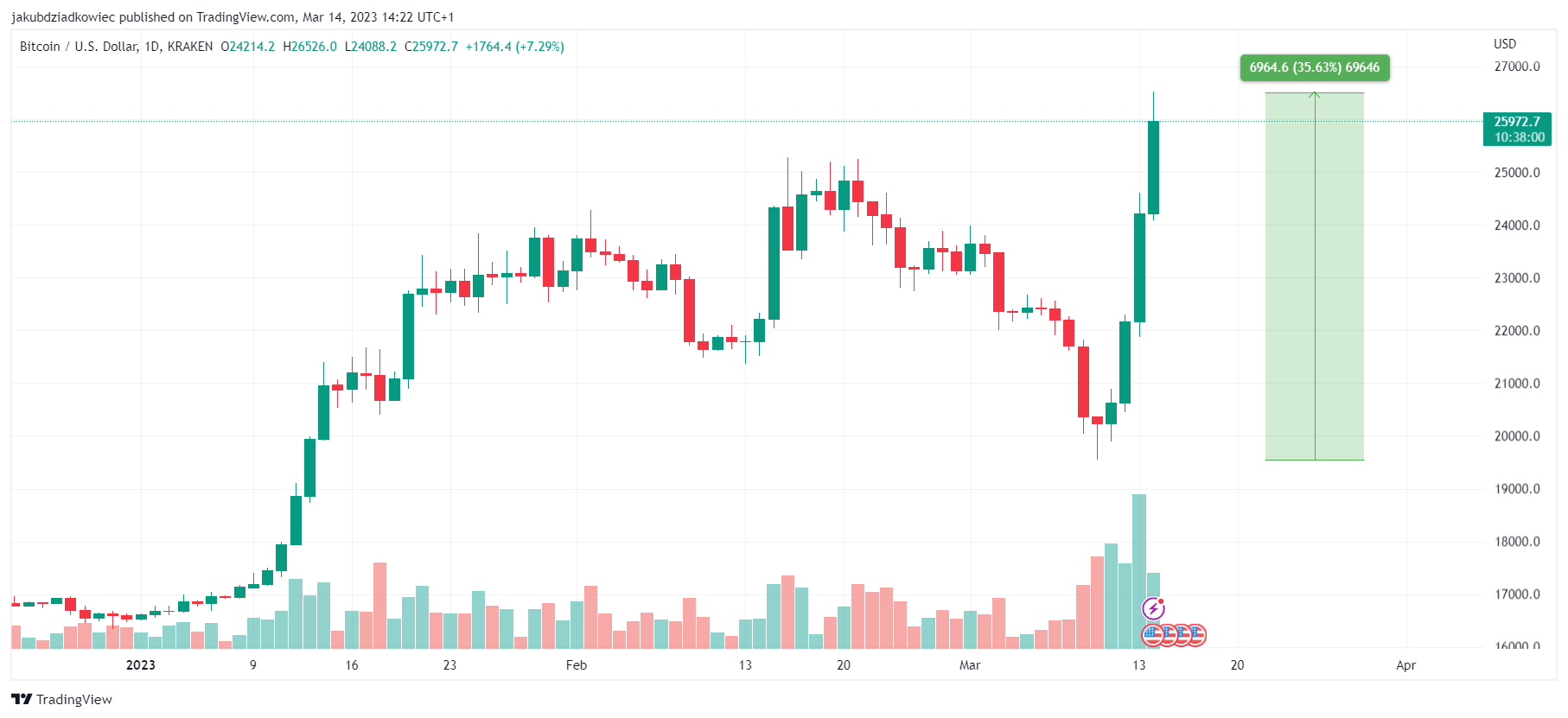
Top 5 Technical Arguments: Closing the CME Gap
The first is the closing of the so-called “CME gap.” This is the difference between BTC’s closing price on the Chicago Mercantile Exchange (CME) on Friday and its opening price the following Monday.
This gap occurs because of the CME’s trading schedule, which is closed over the weekend. The Bitcoin spot market always remains open. Historical analysis of Bitcoin’s price action shows that in almost every CME gap occurrence, the BTC price tends to close later. Sometimes this happens very quickly, and sometimes you have to wait several months.
On the daily chart of Bitcoin CME Futures (BTC!), we see that the CME gap appeared on Jan. 17 2023, and remained unclosed for almost two months. It wasn’t until March 9 and 10 that Bitcoin tested the $20,000 area again, bringing the gap (blue circle) to a close.
With the closing of one CME gap almost immediately, on March 13, another one appeared. This time it covers the $20,300 – $21,100 range. If history repeats itself this time too, Bitcoin has a chance to test this area again in the near future.
Sponsored Sponsored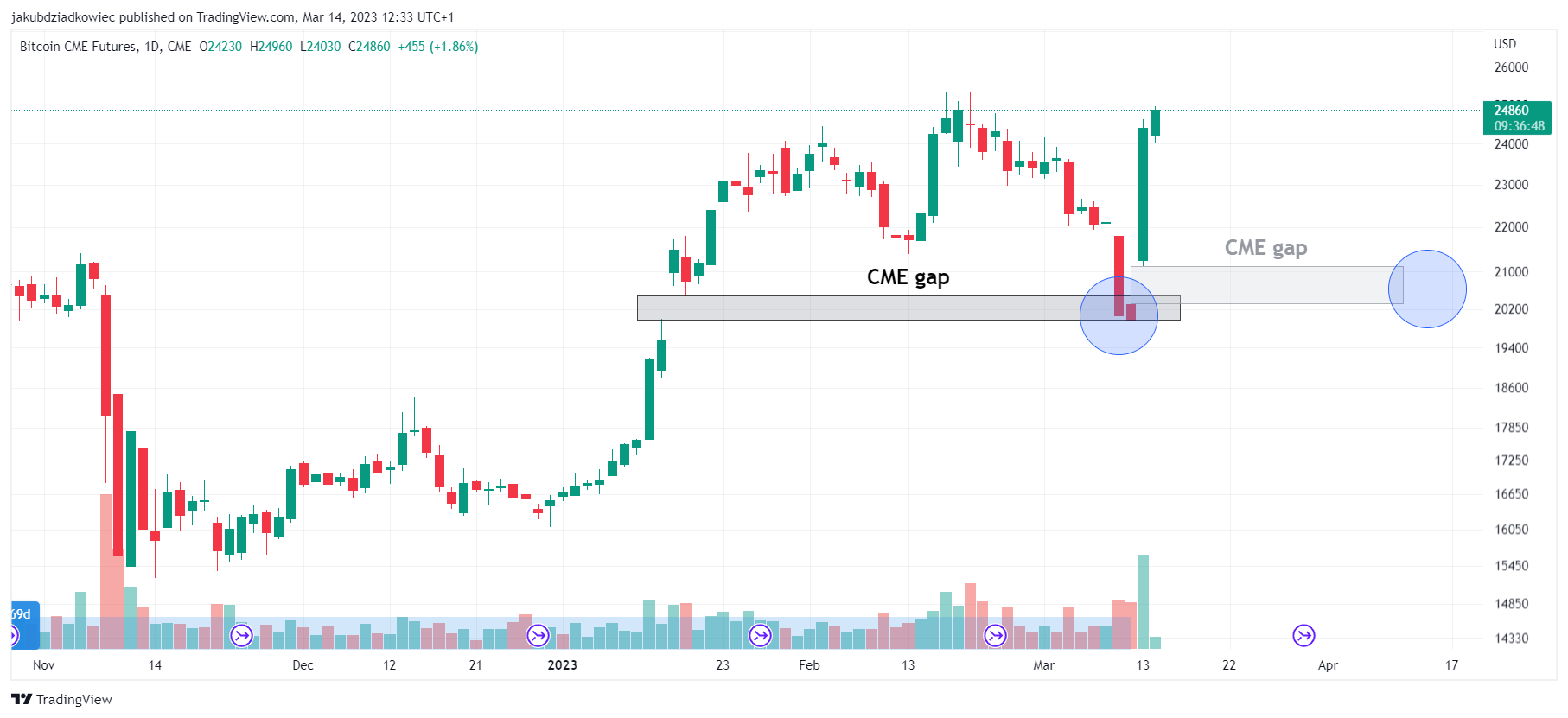
Re-Test of the 2017 ATH
The second signal is the re-testing of the historical all-time high (ATH) from 2017 as support. During the bull market of more than five years ago, the Bitcoin price almost reached the $20,000 level (green line).
The bear market of 2022 led the BTC price to drop to this level. In the period from June to November, BTC price held around this area. However, with the FTX collapse, which had a profound effect on the entire cryptocurrency market, the price deviated significantly below it, recording a bottom at $15,470.
The recovery in the cryptocurrency market, which has been underway since the beginning of 2023, has led to a breakout above this historical area. The end of the very long lower wick of last week’s candle almost exactly validated this area as support (blue circle). This is a very bullish signal that legitimizes the strength of the recovery of the past three months.
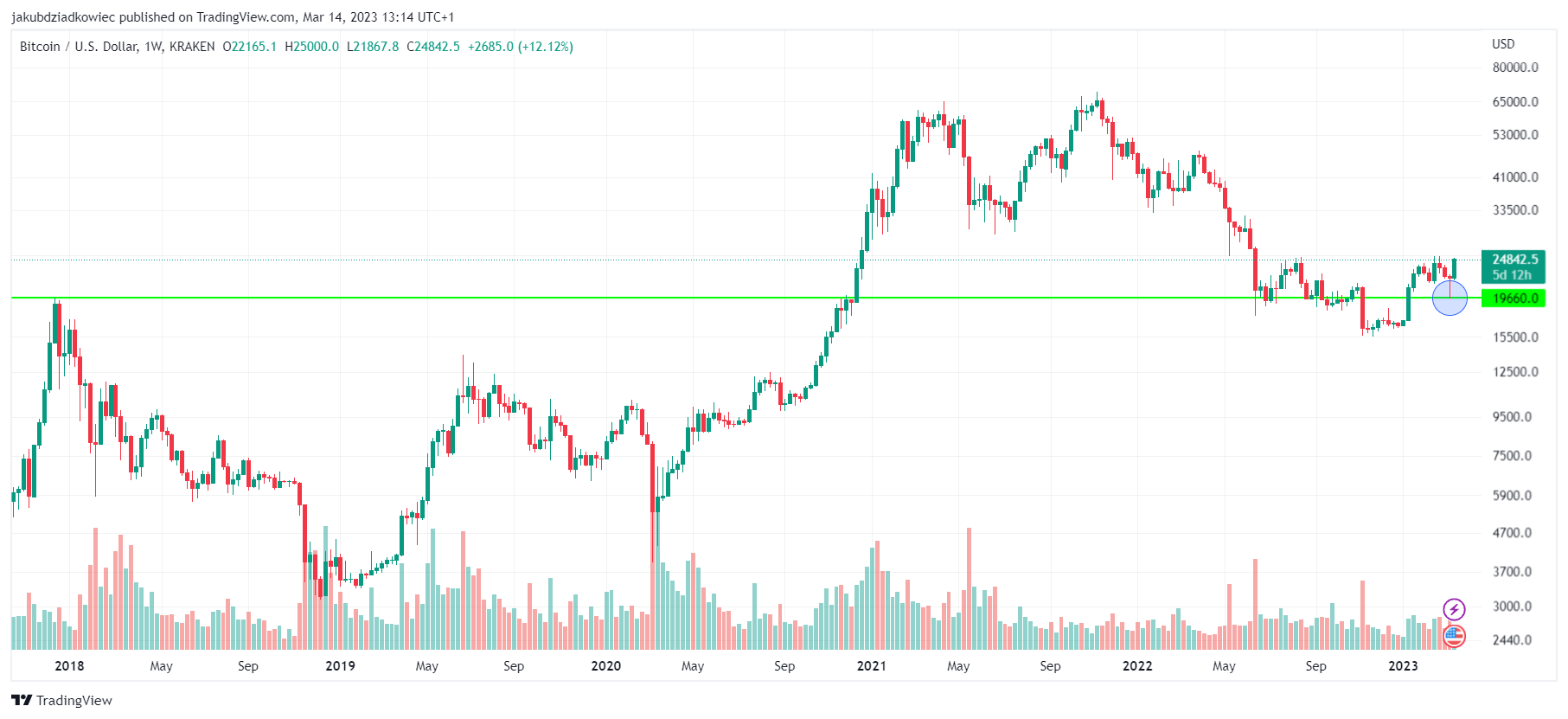
Top 5 Technical Arguments: Bullish Re-Test of the 20W MA
A situation similar to the above is also observed on the chart of the 20-week moving average (20W MA). With the fall of BTC to the $20,000 level, this key moving average has also been validated as support.
On Bitcoin’s long-term chart, the 20W MA plays a key role in confirming the direction of the trend. Many upward or downward movements of BTC have followed re-tests of this moving average. For example, in 2022, the 20W MA rejected downward trend reversal attempts (red circles) as many as twice, leading to a deepening bear market.
On the other hand, in the opposite situation, when the 20W MA experienced a bullish re-test and acted as support, it was a signal for the continuation of Bitcoin price rise. This happened in September 2020 and September 2021 (blue circles).
The current price action resembles this upward scenario. The bullish re-test of the 20W MA provides another argument for the continuation of the upward movement.
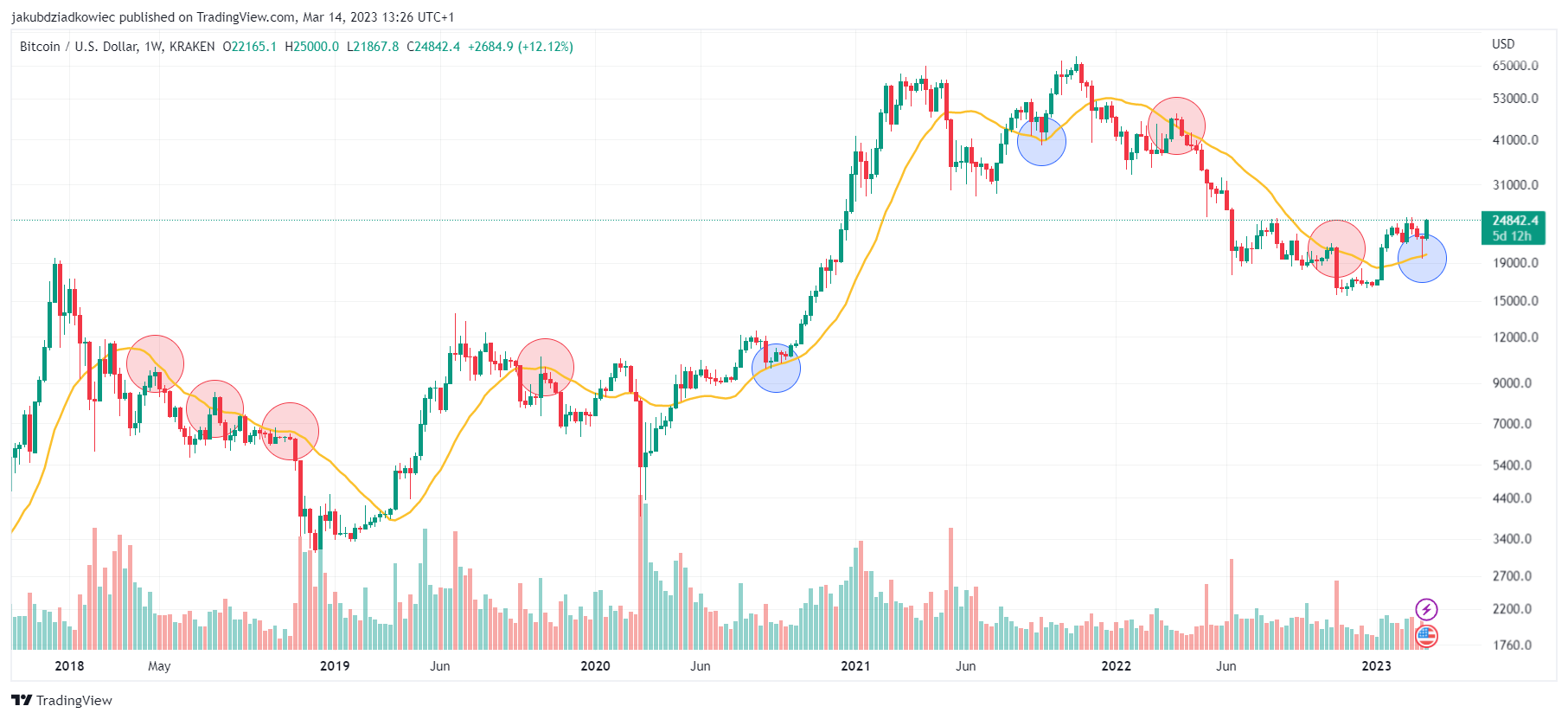
Bullish Re-Test of the Descending Resistance Line
Another reason for the Bitcoin price rise is the second bullish re-test of the long-term diagonal resistance line. This is the line on the logarithmic chart of BTC, which reaches the current ATH at $69,000 from November 2021.
Sponsored SponsoredThis year’s recovery in the cryptocurrency market led to a breakout above this key resistance in late January 2023. It was then first confirmed as support in mid-February. Now – with a drop to the $20,000 area – the Bitcoin price has made this bullish re-test (green circles) for the second time.
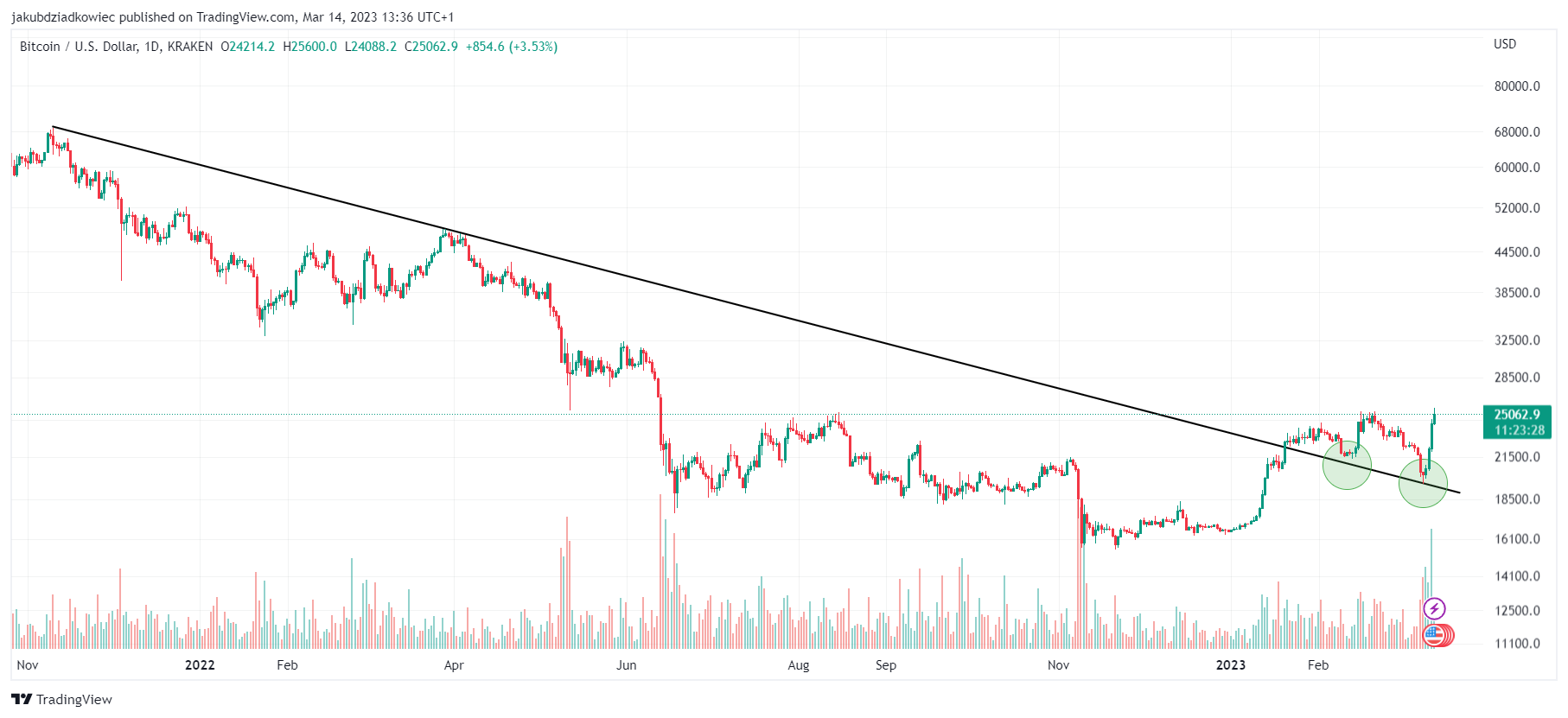
Top 5 Technical Arguments: VPVR Support
The last of the top five technical arguments that explain the 35% Bitcoin price rise is the Volume Profile Visible Range (VPVR) metric. This indicator determines the trading volume for the visible areas of an asset’s price. It is used to identify significant price levels that can potentially serve as resistance or support.
By applying the VPVR to a daily chart of the BTC price over the last nine months of accumulation, it turns out that the $20,000 level (red line) is again the most important. This is the area where most coins have changed hands. Therefore, it could be expected to serve as support (blue circle) after its reclaiming.
This has indeed happened, and the VPVR indicator adds another argument explaining the bullish action of the BTC price over the past five days.
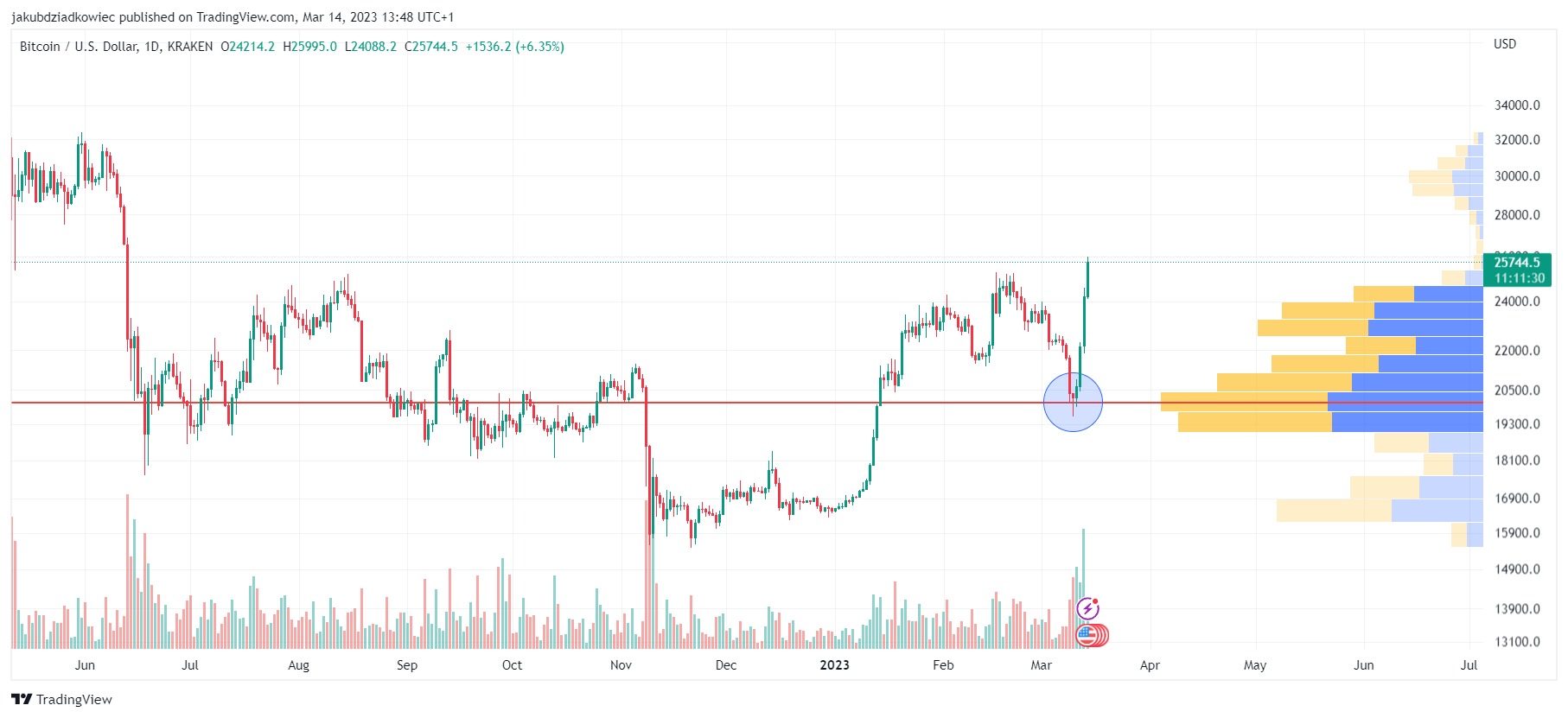
For BeInCrypto’s previous Bitcoin (BTC) analysis, click here.

